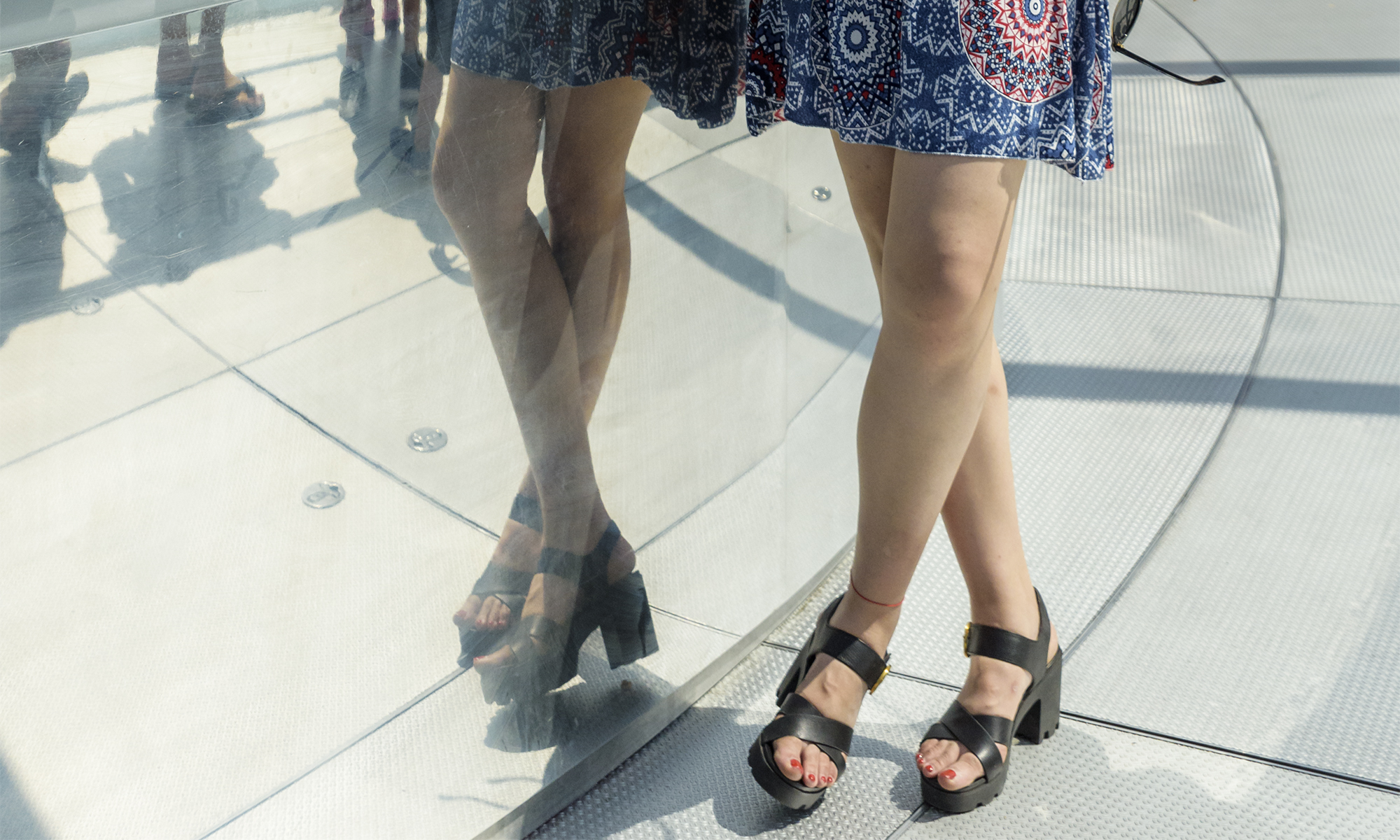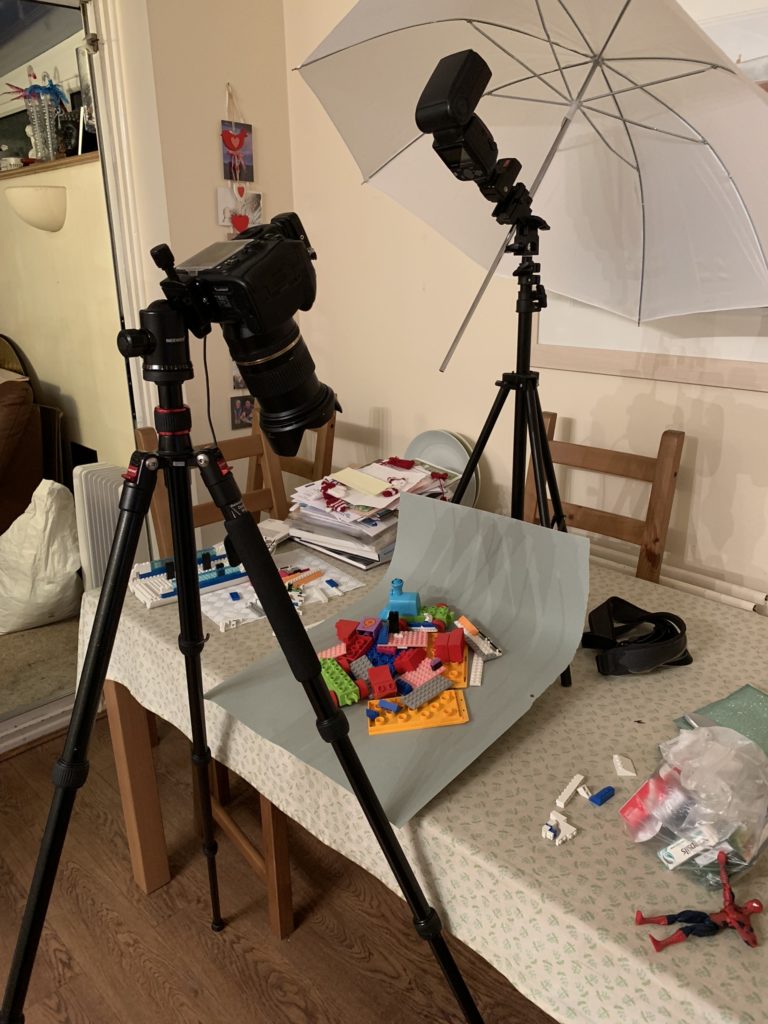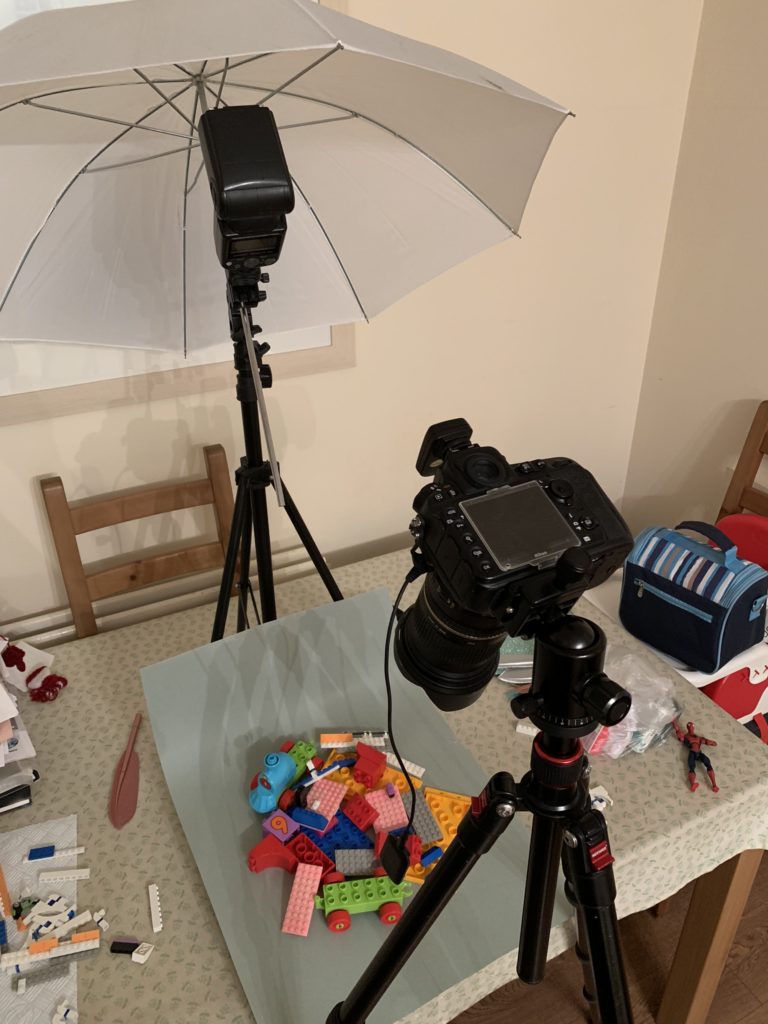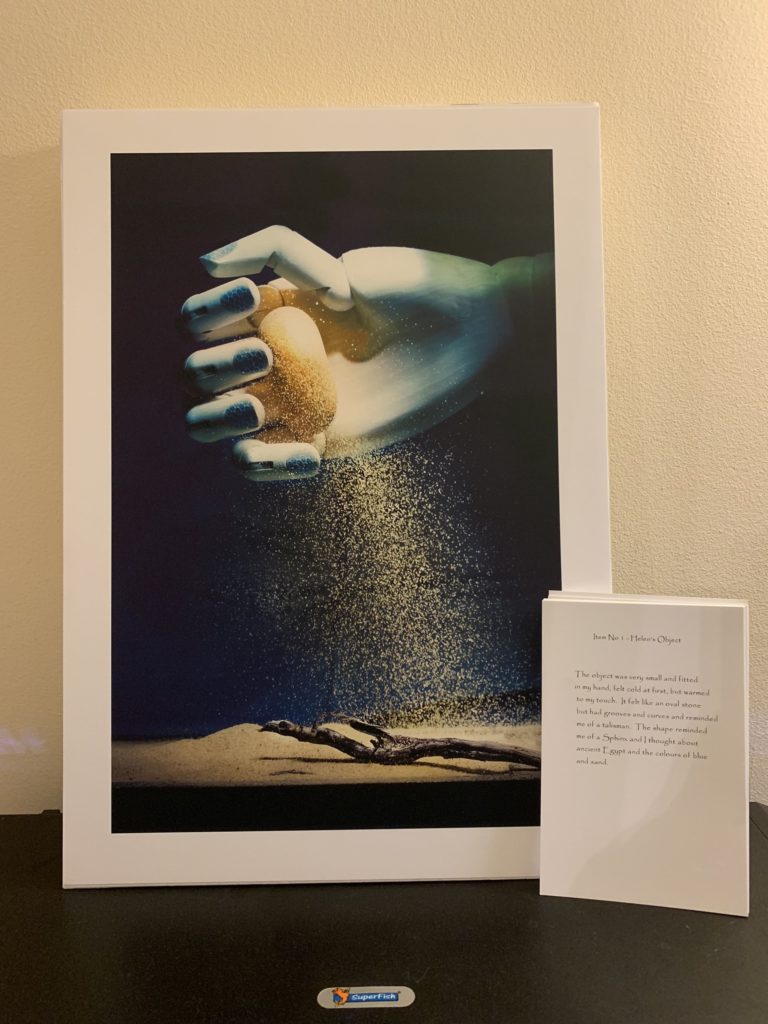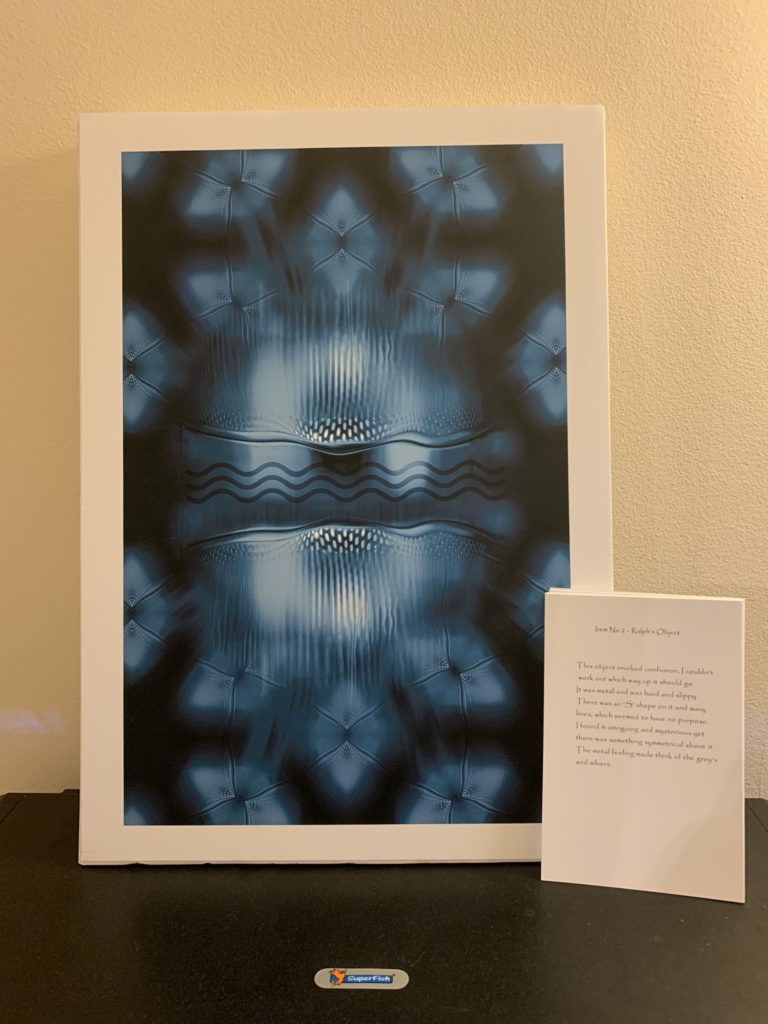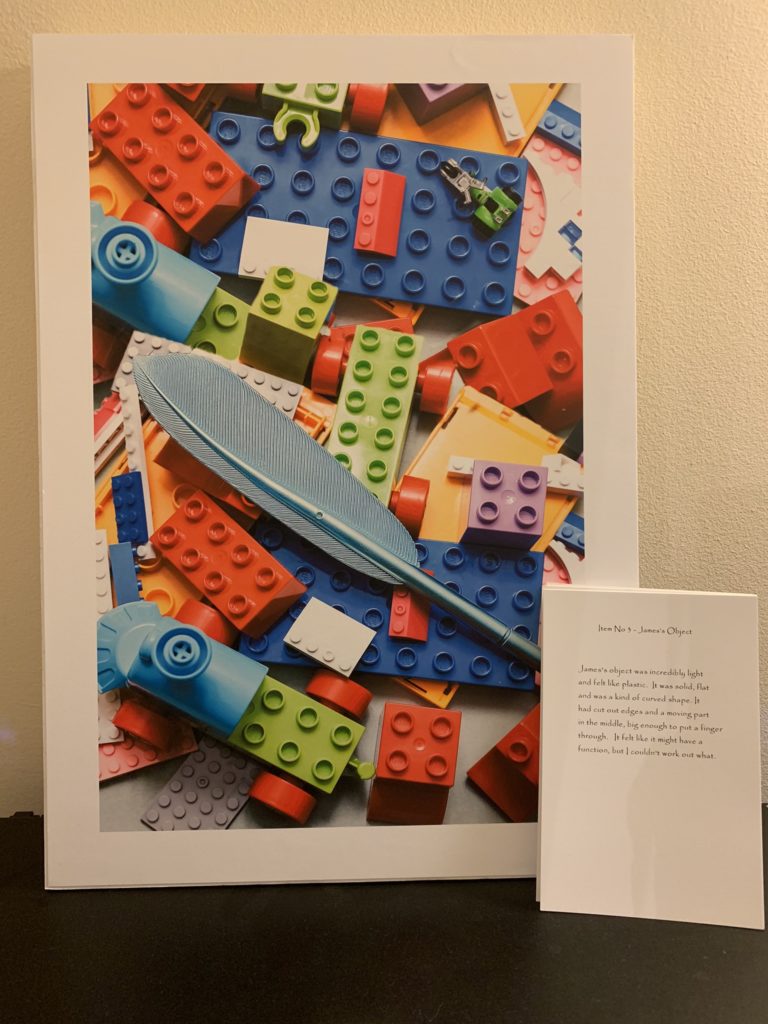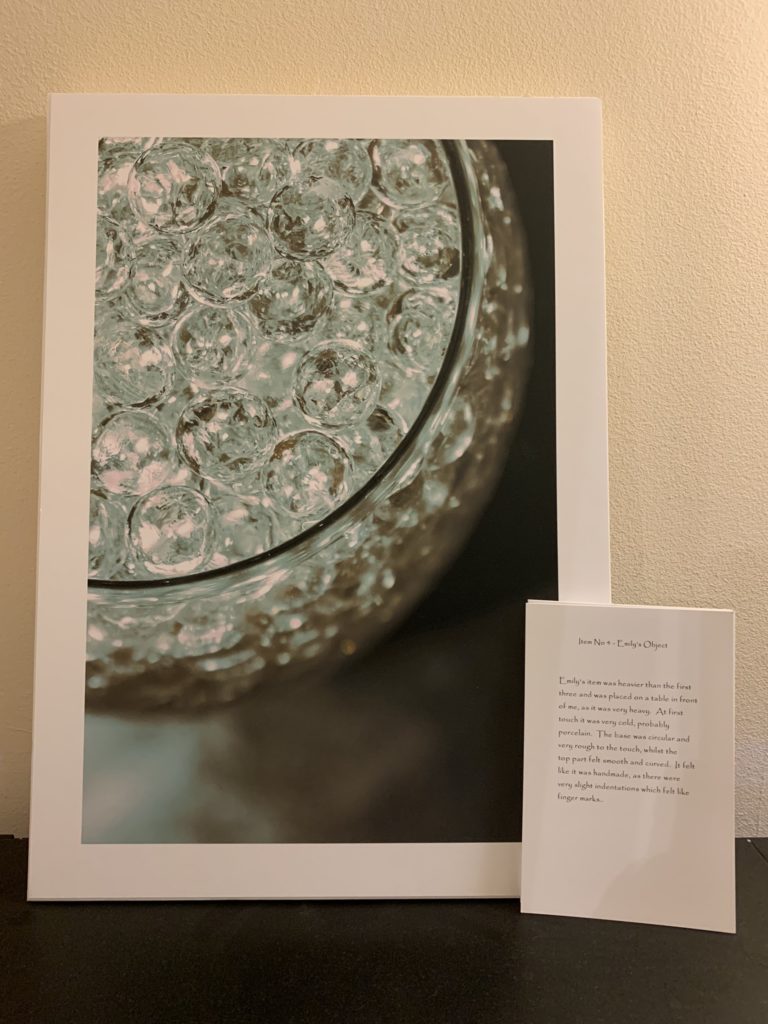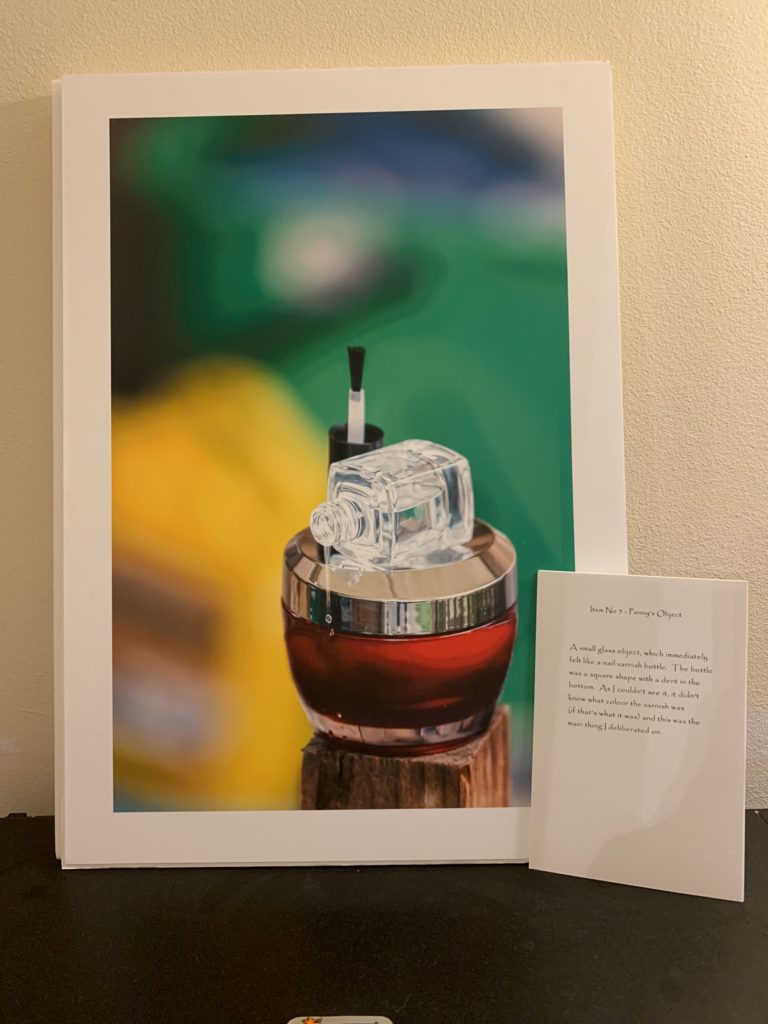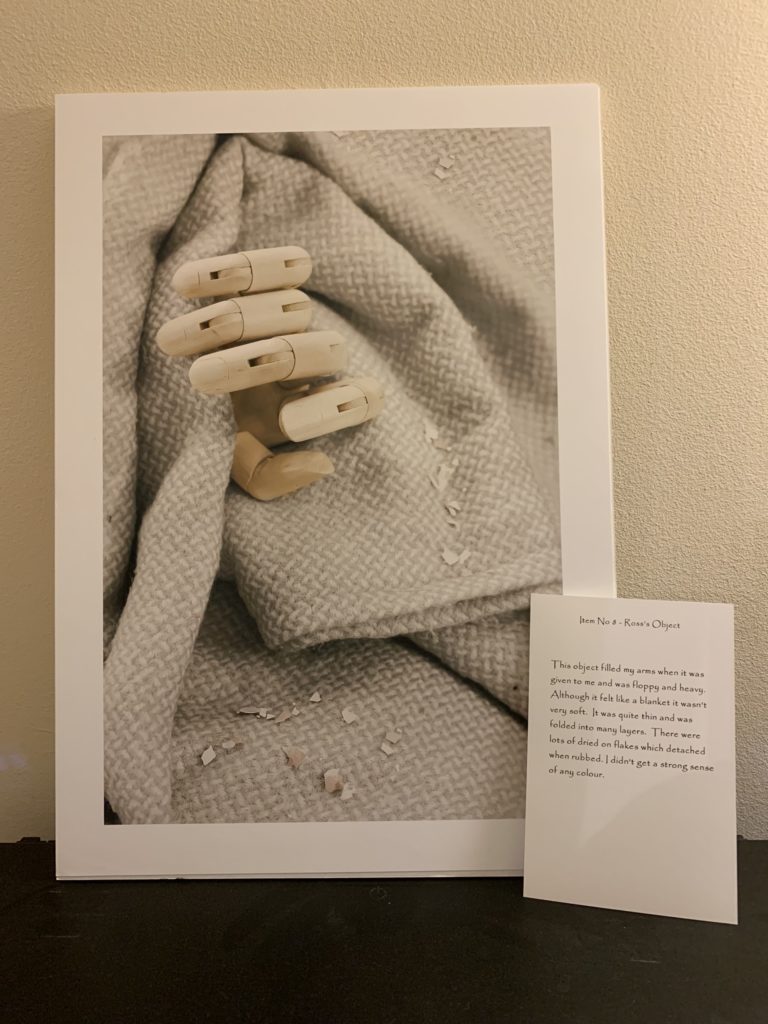Introduction
When you can not see what your are touching, your mind fills in the blanks with images and feelings from your subconscious. These are unique to you because your life experiences and encounters will be what your mind recalls to make sense of what you are experiencing. Walter Benjamin’s theory of ‘optical unconsciousness’ advocated that images contain unseen elements that trigger your unconscious and affect how a viewer sees the image. Therefore, if you cannot consciously see an item is the resulting image the unseen unconsciousness?
This set of images explores the depiction of objects that you have never seen. Each item was chosen by a different individual so that I could not be sure what it was. I have made these images based only on having been able to feel the item whilst blindfolded. The images are my visualisations of the experiences and feelings triggered by touching the and the subconscious associations that it brought to my mind. By this I hope to have unlocked the ‘optical unconscious’, making it conscious.
Although, the actual items have been photographed by an assistant, I have chosen not to see them or present them with this work. Mindful of Roland Bathes ‘winter garden photograph’ which he never showed the viewer because he felt the essence of his mother that he had been searching for, would not be evident to the viewer, I have decided that revealing the actual item may detract from the image presented. My aim is to represent the feelings I experienced, not the item itself. I have, however, provided a description of the feelings and visualisations that I had whilst handling the objects. I have tried to use a ‘relay’ style in the hope that the viewer will engage with each image in their own way.
For a detailed description of the methodology used and technical information about how each of the images was created see below.
Item 1 – Helen’s Object
The object was very small and fitted in my hand, felt cold at first, but warmed to my touch. It felt like an oval stone but had grooves and curves and reminded me of a talisman. The shape reminded me of a Sphinx and I thought about ancient Egypt and the colours of blue and sand.
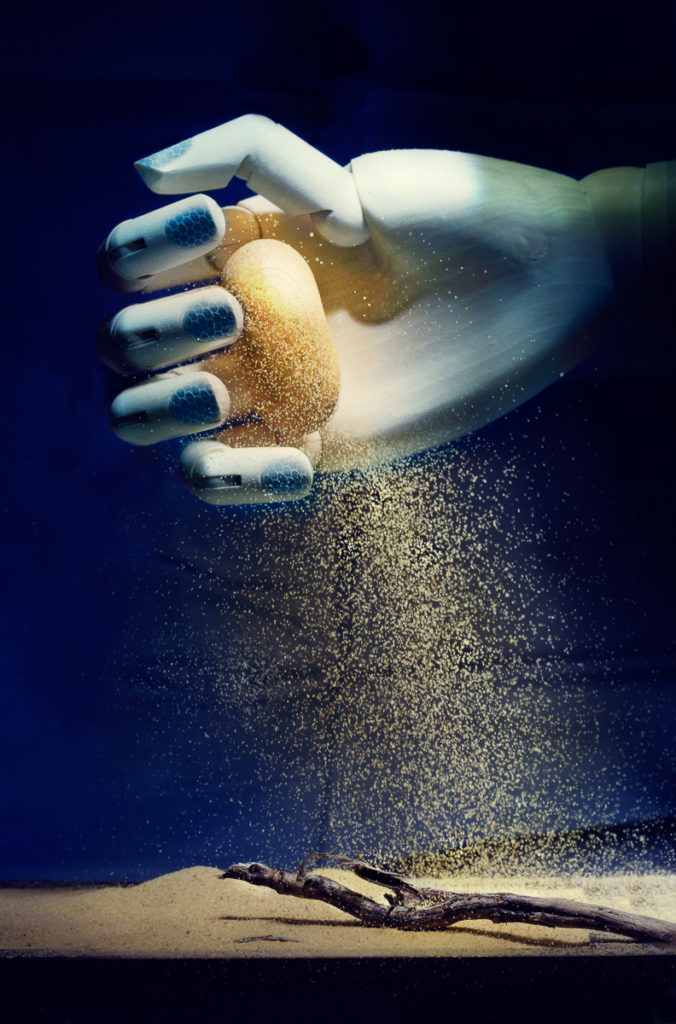
to see my blog about the production of this image click here
Item 2 – Ralph’s Object
This object invoked confusion, I couldn’t work out which way up it should go. It was metal and was hard and slippy. There was an ‘S’ shape on it and wavy lines, which seemed to have no purpose. I found it intriguing and mysterious yet there was something symmetrical about it. The metal feeling made think of the grey’s and silvers.

to see my blog about the production of this image click here
Item 3 – James’s Object
James’s object was incredibly light and felt like plastic. It was solid, flat and was a kind of curved shape. It had cut out edges and a moving part in the middle, big enough to put a finger through. It felt like it might have a function, but I couldn’t work out what.
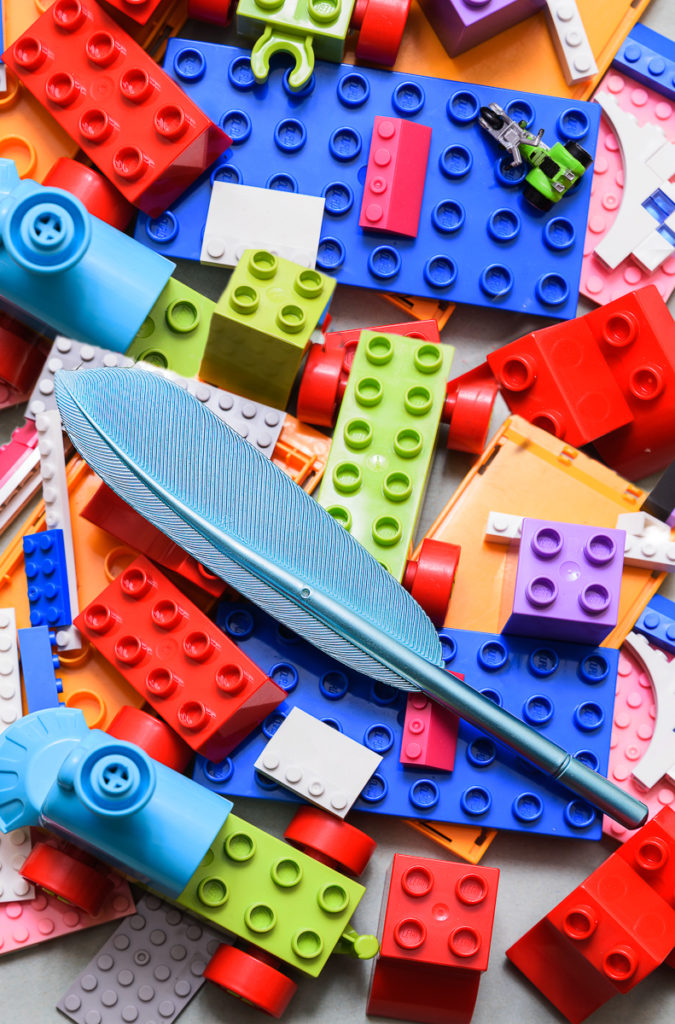
Item 4 – Emily’s Object
Emily’s item was heavier than the first three and was placed on a table in front of me, as it was very heavy. At first touch it was very cold, probably porcelain. The base was circular and very rough to the touch, whilst the top part felt smooth and curved. It felt like it was handmade, as there were very slight indentations which felt like finger marks.

Item 5 – Penny’s Object
A small glass object, which immediately felt like a nail varnish bottle. The bottle was a square shape with a dent in the bottom. As I couldn’t see it, it didn’t know what colour the varnish was (if that’s what it was) and this was the main thing I deliberated on.

Item 6 – Riley’s Object
Being a chocolate lover, this item seemed immediately recognisable, there was an element of doubt. The colours of the wrapper came to mind, especially the deep purple and the small size, hiding in my hand.

Item 7 – Stan’s Object
I was given a bowl and was told the ‘object’ was within it. There were multiple objects, which were light, sticky and round. I ran it through my fingers many times and imagined a sunny morning breakfast.
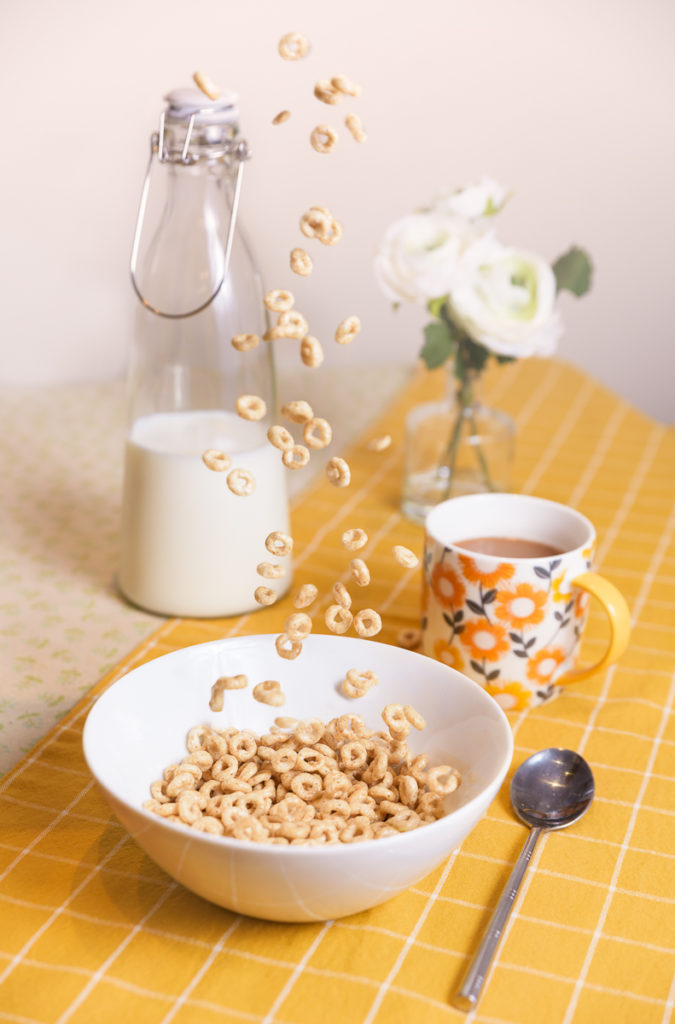
Item 8 – Ross’s Object
This object filled my arms when it was given to me and was floppy and heavy. Although it felt like a blanket it wasn’t very soft. It was quite thin and was folded into many layers. There were lots of dried on flakes which detached when rubbed. I didn’t get a strong sense of any colour.

The Set
All images were made in chronological order.
Methodology and Technical Information
The brief:
- Photographing the unseen Start by doing some reflecting in your learning log. What kinds of subjects might be seen as un-photographable? How might you go about portraying them using photography? List a few examples of things you’re experiencing now or have recently been thinking about. This doesn’t have to be too in-depth or revealing, but it can be if you want. Equally, it might be something as apparently trivial as how you’re going to fit everything into your busy day. At first you may come up with literal examples, but the more you think about them the more those ideas will develop into specific and more original ones. Make a list of at least seven ideas. Try and keep to things you have a personal interest in or curiosity about. Keep a notebook with you at all times and make notes when ideas strike you as interesting. (This is good practice for all stages of the degree and beyond. Ideas books are something to be revisited time and again for ideas and hints for the photographer you’re becoming.) Now implement one of your ideas. Aim for a tightly edited and visually consistent series of 7–10 images.
Having made notes about what kinds of subjects might be seen as un-photographable , I came to the conclusion that many of the things I listed were about how humans internally experience things through their senses. I wanted to rule out sight as this is the photographer’s medium and therefore decided on capturing the experience you have when you can’t see something. My detailed thinking is outlined in the reflective blog below:
After developing this idea, I wrote a briefing for the people I was going to ask to participate outlining my idea and what I wanted them to do. Having decided that I didn’t want to see any of the items until the set was finished, I enlisted help from my husband, to record and keep images of the actual items, so that I can see them at the end. (at the time of writing I still haven’t seen them, as I want to get my tutor feedback before finishing the project).
see the briefing and methodology in the post below:
The first item was used as an experiment, but the methodology to gain the images was followed and worked well. Therefore, it was used for all of the subsequent objects as well.
Detailed notes were written up for the first two items, they can be seen below:
After this I felt that I understood my process and was able to complete the other items without the need for such detailed reports. However, I’v taken some images of set up used. One of the things I wanted to achieve with this set was to do as much in camera as I could.
set ups for Items 3 & 4
Each image was finished before going on to the next one as I felt that I wanted each piece to stand alone and not be influenced the others.
Presentation

My expectation of this project was that my images would be very different because of the different nature of the items. Therefore, I made a conscious decision to make the images portrait rather than landscape and I wanted to have a poster feel to them. The aim was to help with them becoming a set of images. This impacted on my compositions and methods of making the images.
Each image has been printed on A3 foam board and the words have been printed on a 4×6 card. I would like to display in a exhibition style with the words next to them on the wall. I think these image are best seen in a large format.
There is an opportunity to expand this set by focusing on other senses, such as smell or taste. I would also like to explore how one object is visualised differently by different people. My hypothesis is that everyone would come up with very different images.
I have got gold envelopes in which I was going to present the photos of the actual object in a “and the item is. . . ” style. However, at this time, I am undecided whether they would add value to the images I have made or not and therefore, haven’t yet seen the images myself or presented them with this work.
Reflection:
I have definitely learned a few things on this assignment:
- I have some mad cap ideas!
- Things take longer when you’re relying on others to help
- I like involving others in my projects
- I was surprised how interested people were in what I was trying to achieve
- Involving others means you have to be able to verbalise what you want to achieve succinctly, which helps in defining your objectives to yourself as well.
- It’s ok to take a little longer, if it means you can achieve your goals.
- Knowing that I wanted to present the images in a portrait style and print them at A3 really helped me with composition when taking the images.
- My previous tutor said ‘capture your bliss’. I’ve found how engaged I am in a project when it’s something I really want to do.
- Articulating my thoughts after reading about theories like Walter Benjamin and Shawn Michelle Smith’s is a challenge. Sometimes I experience very deep thoughts about some of these concepts and it’s difficult to get them down in writing.
